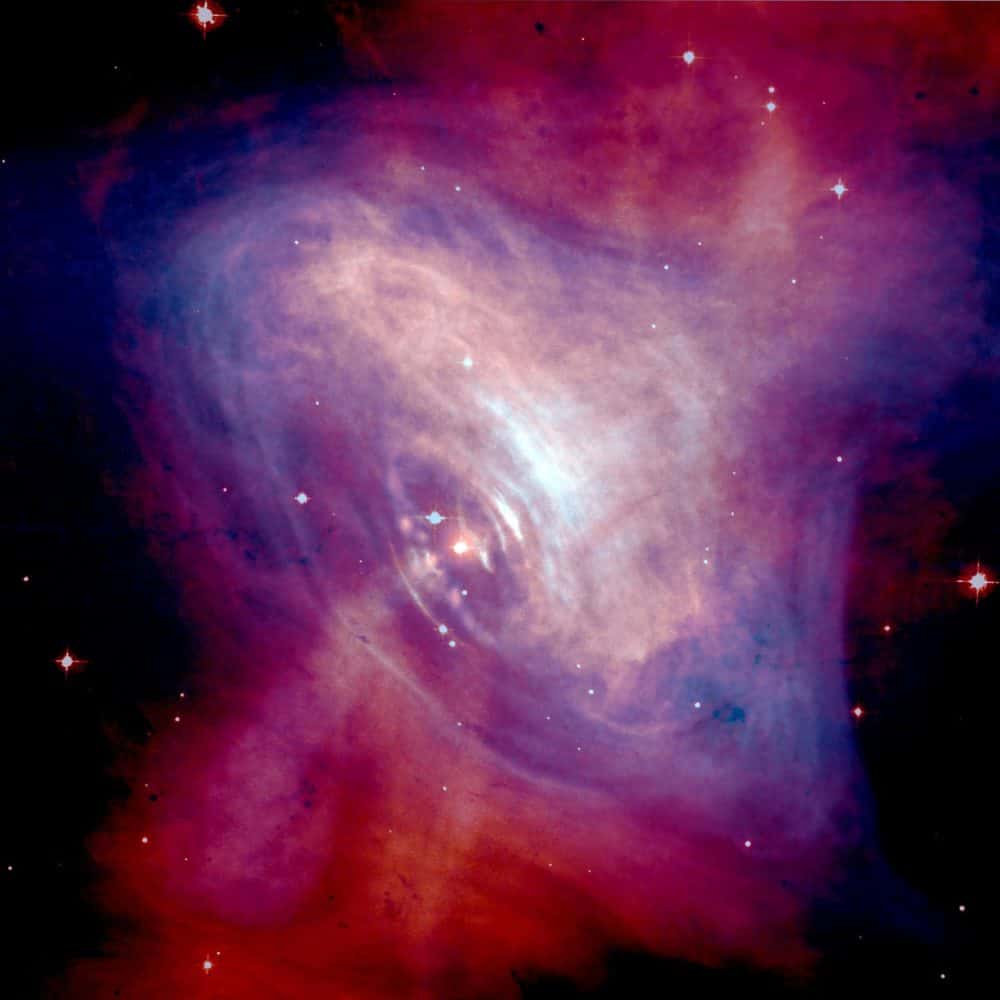The Cosmos with PSR B0531+21 Pulsar
The Crab Pulsar (PSR B0531+21) is a relatively young neutron star. The star is the central star in the Crab Nebula, a remnant of the supernova SN 1054, which was widely observed on Earth in the year 1054. Discovered in 1968, the pulsar was the first to be connected with a supernova remnant.
The Crab Pulsar is one of very few pulsars to be identified optically. The optical pulsar is roughly 20 kilometres (12 mi) in diameter and the pulsar “beams” rotate once every 33 milliseconds, or 30 times each second. The outflowing relativistic wind from the neutron star generates synchrotron emission, which produces the bulk of the emission from the nebula, seen from radio waves through to gamma rays. The most dynamic feature in the inner part of the nebula is the point where the pulsar’s equatorial wind slams into the surrounding nebula, forming a termination shock. The shape and position of this feature shifts rapidly, with the equatorial wind appearing as a series of wisp-like features that steepen, brighten, then fade as they move away from the pulsar into the main body of the nebula. The period of the pulsar’s rotation is slowing by 38 nanoseconds per day due to the large amounts of energy carried away in the pulsar wind.
The Crab Nebula is often used as a calibration source in X-ray astronomy. It is very bright in X-rays and the flux density and spectrum are known to be constant, with the exception of the pulsar itself. The pulsar provides a strong periodic signal that is used to check the timing of the X-ray detectors. 2000 pc distance.
